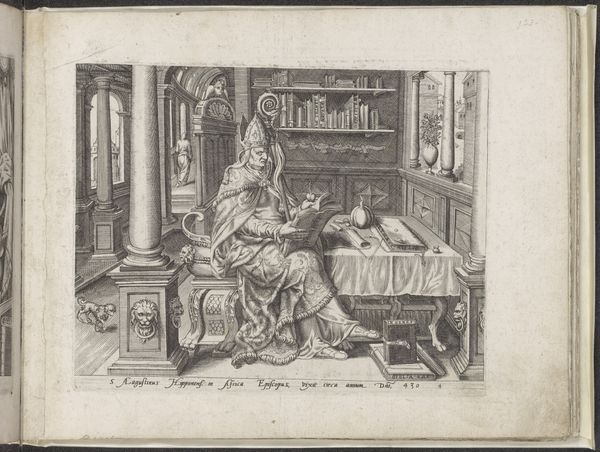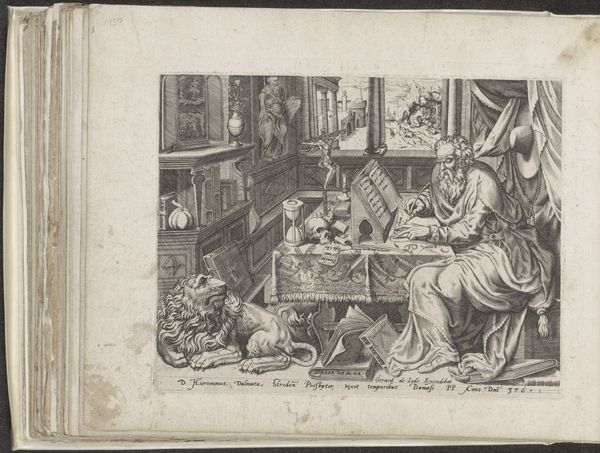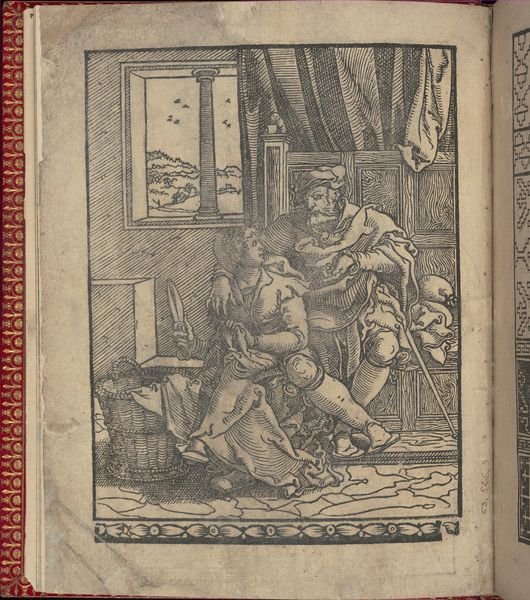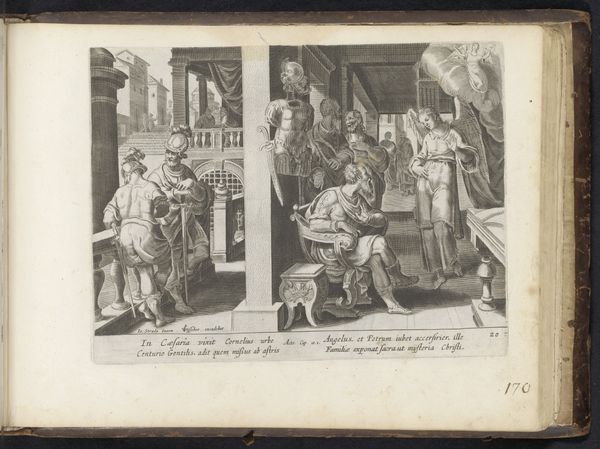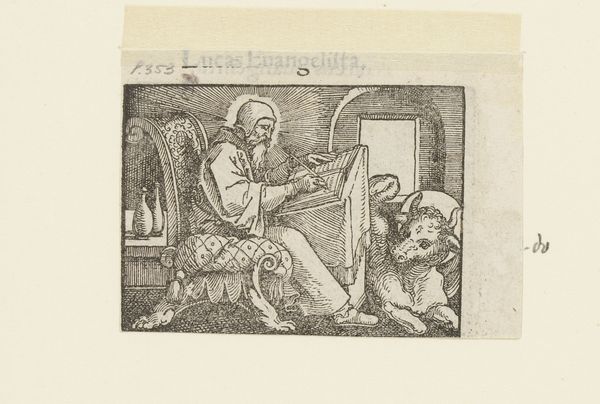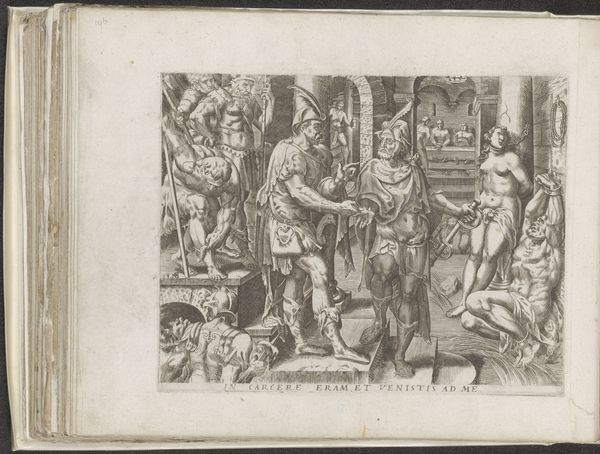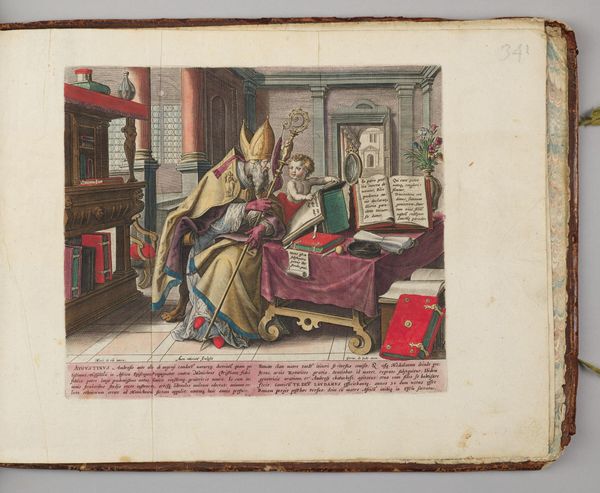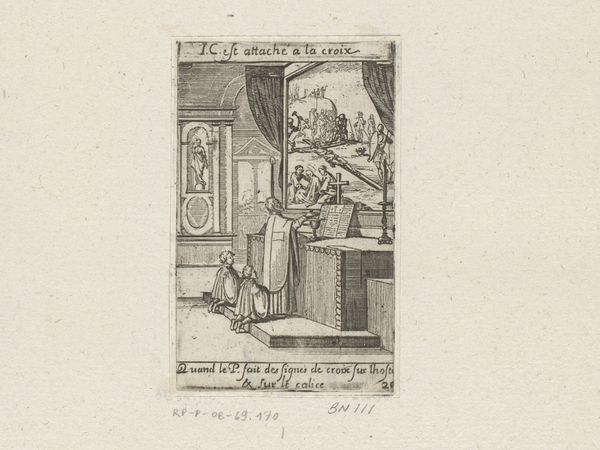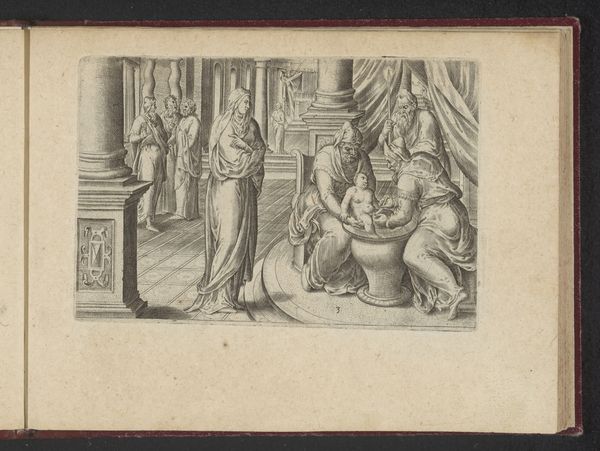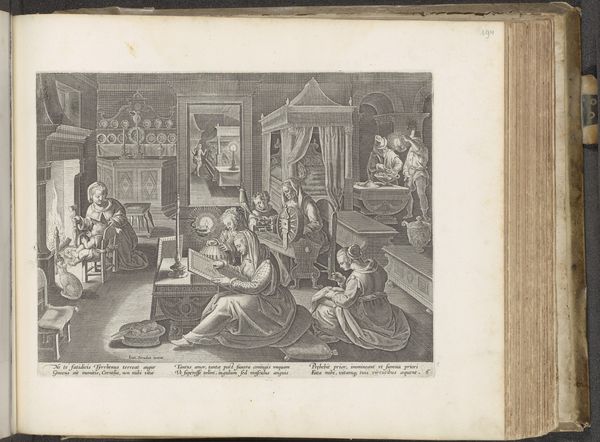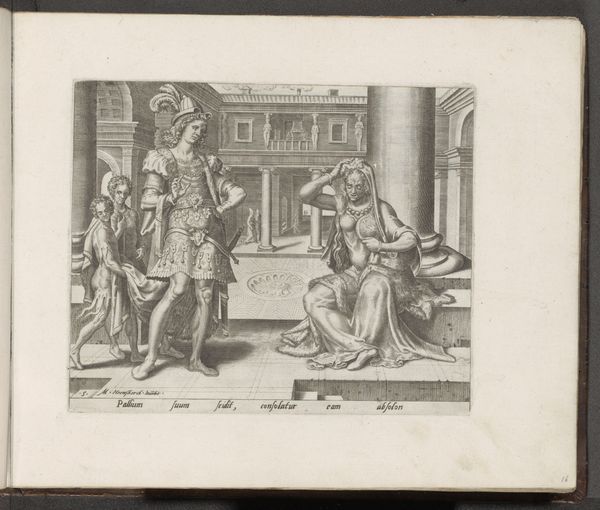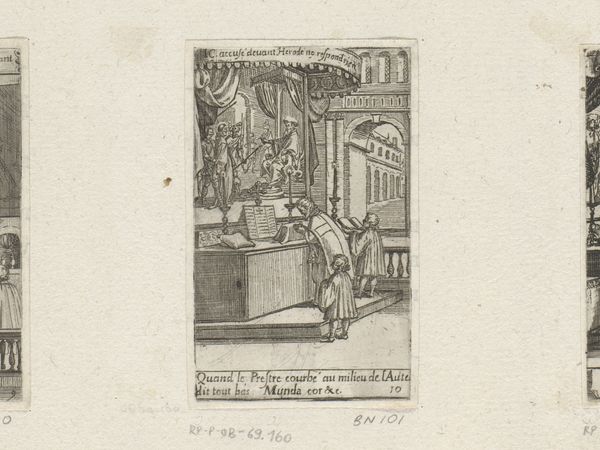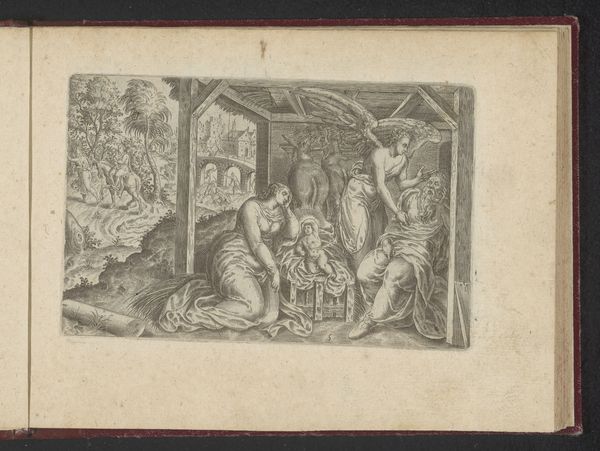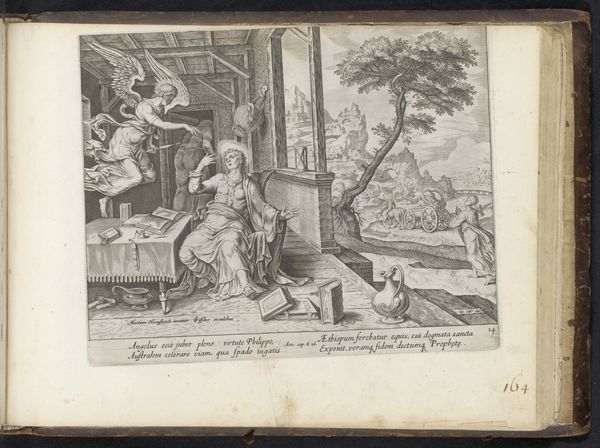
drawing, print, ink, engraving
#
portrait
#
drawing
# print
#
perspective
#
figuration
#
11_renaissance
#
ink
#
chiaroscuro
#
history-painting
#
northern-renaissance
#
engraving
Dimensions: height 202 mm, width 251 mm
Copyright: Rijks Museum: Open Domain
Editor: This is “Kerkvader Ambrosius” by Pieter Nagel, dating back to before 1571. It’s a striking engraving, filled with intricate detail. I'm really drawn to how the artist used perspective to create depth, almost like a stage set. What's your take on it? Curator: The choice of Saint Ambrose as a subject tells us much about the function of images in this period. Nagel situates Ambrose within a meticulously constructed, idealized interior. Ask yourself, what's the political implication of portraying a Church Father with such authority and in such a lavish setting? Editor: I guess it elevates the Church's status and reinforces its power...Was it propaganda, in a way? Curator: Precisely! Remember the context: this is the Reformation era. Printmaking became a powerful tool for disseminating religious and political ideologies. This image participates in a visual culture war, reinforcing the Catholic Church’s authority amidst growing Protestant challenges. Notice how the inclusion of texts further validates the intellectual tradition of the Church. How does that play out in relation to who might see it, and what they might believe? Editor: That makes so much sense. So it's not just a portrait; it's a statement. The detail of the setting becomes less about architectural accuracy and more about conveying power, right? Curator: Absolutely. And remember, the medium of print itself lends the image to mass production and distribution. Images such as these could shape public perception in a way that was unprecedented. This was the dawn of image politics, and it remained crucial as different political ideologies began to take hold of society. Editor: Wow, I never considered how active these images were, contributing to something bigger. It really does highlight how art and power are interwoven, doesn't it? Curator: Precisely. Art always speaks to—and often actively shapes—its socio-political context.
Comments
No comments
Be the first to comment and join the conversation on the ultimate creative platform.
